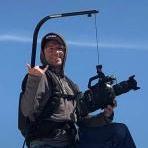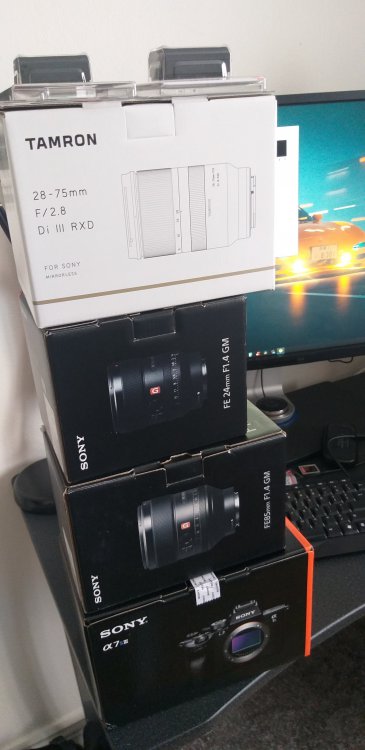Leaderboard
Popular Content
Showing content with the highest reputation on 10/12/2020 in all areas
-
What's today's digital version of the Éclair NRP 16mm Film Camera?
kye and one other reacted to BenEricson for a topic
Fair enough. I didn't realize you were talking about reversal film or film prints. Reversal was extremely popular at that time. The Dark Knight was shot negative but done with a traditional film print work flow and saying it has poor dynamic range and is comparable to ML is a tough sell. The roll off on highlights is just so damn pretty! From my experience with color negative film, the amount of range and especially highlight detail far exceeds what you would ever need to pull out in post. An exposure needs to be set in the grade, but like you said, you have a ton of leeway. It is quite remarkable what you can pull from even a 16mm negative film. I am definitely interested in that book. It was written in 2006 and the scanning technology we have now didn't even exist back then, but I am interested in that more classical style of shooting and finishing contrast than the DI style grading. Thanks for the recommendation.2 points -

The URSA Mini Pro 12K
Juank reacted to Neumann Films for a topic
Is amazing. I love it. Never going back to RED unless I’m forced to by a client. Just thought I would share. The IQ is pristine, colors are great and it’s just a breeze to use. Will post a few stills here in a day or two.1 point -
The 1080p 120 is so good I'd be happy with that if they gave me it in 10-bit log.1 point
-
Interesting, if you are willing to open your R5: https://blog.yifangu.com/2020/10/09/canon-eos-r5-thermal-mod/1 point
-
Unfortunately I do not know anything about the micro version! I guess if you can put it close to the subject it will work. The other version is boom-able, the characteristics must be pretty similar. There are straightforward solutions from Rycote and others to put on a boom the classic one, I am not sure what one can do with this. Maybe it is more appropriate as a hide-in microphone. The smaller the mic, the more difficult is to put it on a boom because then there are other issues (very small mass needs very delicate solutions), so maybe it will be more expensive to buy accessories for the micro. For me, shotguns is a NO NO for indoor dialogue or interviews. Maybe best of both worlds is the Sanken CS-M1, very happy with this, coupled with the Cinema Cosi, but it is overkill for your needs. Just find a good cheap used Audix, they are build like tanks.1 point
-
Most of us who shot film were working with a capture range of 7 1/2 to 8 stops, and that range was for normal stock with normal processing. If one "pulls" the processing (underdevelops) and overexposes the film, a significantly wider range of tones can be captured. Overexposing and under-developing also reduces grain and decreases color saturation. This practice was more common in still photography than in filmmaking, because a lot of light was already needed to just to properly expose normal film stocks. Conversely, if one "pushes" the processing (overdevelops) while underexposing, a narrower range of tones is captured, and the image has more contrast. Underexposing and overdeveloping also increases grain boosts color saturation. Because of film's "highlight compression curve" that you mentioned, one can expose for the shadows and midtones, and use less of the film's 7 1/2 - 8 stop capture range for rendering highlights. In contrast, one usually exposes for the highlights and bright tones with digital, dedicating more stops just to keep the highlights from clipping and looking crappy. I don't think @kye was referring to reversal film. The BMPCC was already mentioned in this thread. No. Because of its tiny size, the BMPCC is more ergonomically versatile than an NPR. For instance, the BMPCC can be rigged to have the same weight and balance as an NPR, plus it can also have a shoulder pad and a monitor -- two things that the NPR didn't/couldn't have. In addition, the BMPCC can be rigged on a gimbal, or with two outboard side handles, or with the aforementioned "Cowboy Studio" shoulder mount. It can also be rigged on a car dashboard. The NPR cannot be rigged in any of these ways. To exactly which cameras do you refer? I have shot with many of them, including the NPR, and none of the cameras mentioned in this thread are as you describe.1 point
-
someone in the nikonrumors comments said the sensor can only do 40hz in full frame. Not sure if this is true but if so, rules out 4k 60 FF. I agree, they shouldn't give it the ii moniker if its a minor update. Urgh!1 point
-
Canon EOS R5/R6 user experience
Emanuel reacted to herein2020 for a topic
I already took it back......the whole situation was unbearable for me, I live in a very hot humid climate which is like that 8 months out of the year; I can't wonder before every shoot if the camera will make it through the shoot. I did try pulling the battery once while it was on and changing the date just to see if the timer would add time...but I probably did it in the wrong order or something so it did not work for me. For my particular situation the R6 simply was not fit for anything but photography. I now own the Panasonic S5 and so far it is amazing in nearly every way. In case you haven't seen my review, you can read more about it on this thread:1 point -
What's today's digital version of the Éclair NRP 16mm Film Camera?
tupp reacted to BenEricson for a topic
Yeah, the OG pocket cam is S16 and also has a similarity in the highlight sensitivity. Ergonomically though, beyond terrible, any of those cameras mentioned are like Fisher Price toys compared to the Eclair. Nobody ever even bothered to create a modern zoom lens that could compete with the old S16 ones. Maybe the Canon 18 - 80 on a C300?1 point -
New footage from the Blackmagic URSA Mini Pro 12k is few and far between. Seems like dogs in 8K 60p and 12k 60p is best we can do on a Sunday morning (starting at 8:36 in the video). A good reminder regarding focus and depth of field when shooting household pets. ; ) "Help me, @Neumann Films. You're my only hope."1 point
-
Which do you agree with - that film has poor DR or that Canon DSLRs have? I suspect you're talking about film, and this is something I learned about quite recently. In Colour and Mastering for Digital Cinema by Glenn Kennel he shows density graphs for both negative and print films. The negative film graphs show the 2% black, 18% grey and 90% white points all along the linear segment of the graph, with huge amounts of leeway above the 90% white. He says "The latitude of a typical motion picture negative film is 3.0 log exposure, or a scene contrast of 1000 to 1. This corresponds to approximately 10 camera stops". The highlights extend into a very graceful highlight compression curve. The print-through curve is a different story, with the 2% black, 18% grey and 90% white points stretching across almost the entire DR of the film. In contrast to the negative film where the range from 2-90% takes up perhaps half of the mostly-linear section of the graph, in the print-through curve the 2% sits very close to clipping, the region between 18% and 90% encompasses the whole shoulder, and the 90% is very close to the other flat point on the curve. My understanding is that the huge range of leeway in the negative is what people refer to as "latitude" and this is where the reputation film has of having a large DR comes from, because that is true. However, if you're talking about mimicking film then it was a very short period in history where you might shoot on film but process digitally, so you should also take into account the print film positive that would have been used to turn the negative into something you could actually watch. Glenn goes on to discuss techniques for expanding the DR of the print-through by over-exposing the negative and then printing it differently, which does extend the range in the shadows below the 2% quite significantly. I tried to find some curves online to replicate what is in the book but couldn't find any. I'd really recommend the book if you're curious to learn more. I learned more in reading the first few chapters than I have in reading free articles on and off for years now.1 point
-

Youtube 4K quality is so poor you might as well shoot 1080p
BenEricson reacted to TheRenaissanceMan for a topic
1 point -

X-T3 Question: 4:2:2 10-bit versus 4:2:0 10-bit gradeability
Xavier Plagaro Mussard reacted to dgbarar for a topic
This might be a little off topic and it may or may not help others using FCPX. Never transcode your H265 files to Proress 422 before importing into FCPX. Allow, FCPX to generate optimized files upon importing. The optimized files are ProRes 422. Do your editing. Once you have completed your project, delete the optimized media and you will be left with a smaller project file that only has the H265 media. If you ever need to edit your project, allow FCPX to again generate the optimized media. Hope this might be of help to others. Don1 point -
Thanks @Lux Shots but I suspect Adobe will be there within the next couple of weeks. I’m no fan of Adobe or their subscriptions but I’m not a fan of change either and so Lightroom Classic for pics and Premiere for video suit my needs right now. Though Premiere has this annoying habit of unlinking video and audio when I drag clips over to the timeline of leaving the audio behind... I’m not very techy but need to find an answer to that one...1 point
-
Well I just took my S5 out on a proper full day's video job! I think it went quite well and will post up the result once I've edited the job. Takes a bit of used to with the familiarity of the controls etc and just the ergonomics/muscle memory coming from Fuji XT3 but looked good on the back of the camera. So far, so good...1 point
-
Panasonic S5 Entry Level Full Frame seems to be real...
Lux Shots reacted to herein2020 for a topic
I figured out what happened, the last line in their specs on screen was the 60FPS options and the video went behind my taskbar on my desktop so it was covering up that last line. My S5 gets here today, and the EF adapter should be here Friday. I do wish the GH5 batteries worked with it since I was not able to order any additional batteries.1 point -
This video kinda confirms what I see.. Panasonic Vlog is the most robust codec so far, can be over and under exposure and still can get away, Sony you will have to use non log profile to have "clean" lowlight, underexposed slog is so ugly.1 point
-
At present I only have the 20-60mm kit lens. It’s quite impressive actually and will principally be my wide angle for stills. Pretty dreadful in low light at the long end being just f5.6 however! Not that I will ever use it like that... I should have the Sigma 45mm f2.8 but Panasonic are so far refusing to honor the preorder offer. Also refusing to even correspond in regard to it which is totally bizarre as all my communications have been extremely polite... But that aside, my plan is the 35mm f1.8 and 85mm f1.8 next Spring. Pretty sure that for my needs they will be the sweet spot for size, weight, shallow enough DOF and price, plus being native, play the nicest with the AF!1 point
-
...and a few days later, I'm keeping it after all. In fact, a pair of them are going to be my main workhorses as I intended. I have been trying to find a workaround and not just a 'kidding myself' fix, but something genuine. I looked at both the HC-X1500 camcorder and the bridge camera (for my static manual and occasional but important AF needs) but just know that based on my current 1" sensor Sony camcorder, the footage is going to be shite. And it's still contrast detect, so nah. Back on to the stage comes a used XT3 body and I already have a Fringer and 17-50mm f2.8 Sigma so for all my static manual focus needs, et voila and for the 1 minute or so on each job when I also need AF, et voila encore. As I may have said before, I love this camera (the S5) in every way except the weird pulsing in AF mode but otherwise there is something just 'right' about it. That combo of size, weight, ergos, dials, buttons, operation and of course quality of both video and stills files. Just need some projects to use the bugger on now...1 point
-

Youtube 4K quality is so poor you might as well shoot 1080p
BenEricson reacted to SteveV4D for a topic
That explains why Endgame looked quite soft to me in places both on my local cinema screen using 4K projectors and also on my 4K Bluray. Ironically movies shot on 35mm decades ago, look more detailed than many stuff shot more recently.1 point -
1 point
-
First outing with the camera. handheld with a 24-105. Loved the camera. I need to adjust a couple things but for the most part a near perfect camera for me. It was extremely dark with the forest canopy. I'll try the Sigma 18-35 next. -Dave1 point
-
These are thick looking images! No noise reduction or other processing weirdness. Super highly saturated shadow areas which many cameras nowadays desaturate to cover chroma noise Overall huge tonal variation. And what I guess - proper looking motion. Something the A7sIII especially is bad with since it's optimized for low light - CFA prioritizing sensitivity over tonality + tons of temporal noise reduction and sharpening. All ending in a sterile and thin looking image. Worst thing, doing ETTR to avoid smearing and ghosting at middle gray and below hues start shifting around. 😐-1 points






.gif.dee684a30b7963ac3f3cd8b5c848b619.gif)
